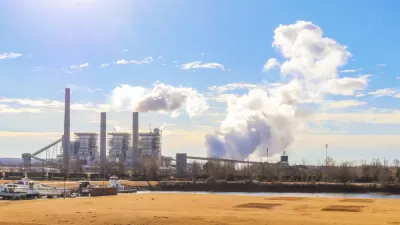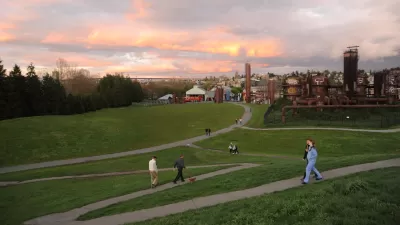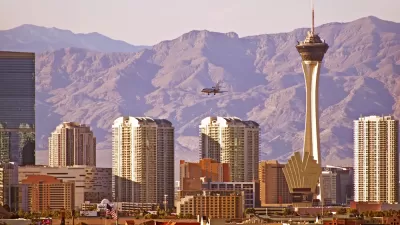Climate-friendly government policies and recent investments by energy companies are accelerating the growth of renewables.

After drastic declines in driving thanks to pandemic closures, traffic and carbon emissions are making a fast recovery as we inch toward a post-COVID world. The International Energy Agency has started releasing monthly data on carbon emissions, letting researchers understand trends from month to month and monitor changes as they happen. "In its latest Global Energy Review, the IEA found that Covid-19 touched off the biggest annual drop in carbon emissions ever," writes Liam Denning for Bloomberg, "down almost two billion tonnes, or about 6%."
However, "lower demand for electricity wasn’t the biggest factor behind that. The vast majority of it was explained by increasing penetration of renewable energy, whose share of global generation recorded its biggest annual gain ever." In the U.S., federal policy is also supporting a shift to renewable energy, with the Biden administration's focus on climate poised to "reset the economics of energy and related fields to take account of the climate challenge."
Because "a systemic problem like climate change demands systemic solutions," periodic and accidental reductions in emissions caused by global crises aren't enough to move toward a more sustainable future. If recent trends continue, "the power sector’s technology-based decline in emissions" will last well beyond the pandemic as major energy companies continue to invest in renewables and clean energy infrastructure.
FULL STORY: Carbon Emissions Made a Rapid Recovery From Covid

Trump Administration Could Effectively End Housing Voucher Program
Federal officials are eyeing major cuts to the Section 8 program that helps millions of low-income households pay rent.

Planetizen Federal Action Tracker
A weekly monitor of how Trump’s orders and actions are impacting planners and planning in America.

Ken Jennings Launches Transit Web Series
The Jeopardy champ wants you to ride public transit.

California Invests Additional $5M in Electric School Buses
The state wants to electrify all of its school bus fleets by 2035.

Austin Launches $2M Homelessness Prevention Fund
A new grant program from the city’s Homeless Strategy Office will fund rental assistance and supportive services.

Alabama School Forestry Initiative Brings Trees to Schoolyards
Trees can improve physical and mental health for students and commnity members.
Urban Design for Planners 1: Software Tools
This six-course series explores essential urban design concepts using open source software and equips planners with the tools they need to participate fully in the urban design process.
Planning for Universal Design
Learn the tools for implementing Universal Design in planning regulations.
Ada County Highway District
Clanton & Associates, Inc.
Jessamine County Fiscal Court
Institute for Housing and Urban Development Studies (IHS)
City of Grandview
Harvard GSD Executive Education
Toledo-Lucas County Plan Commissions
Salt Lake City
NYU Wagner Graduate School of Public Service





























